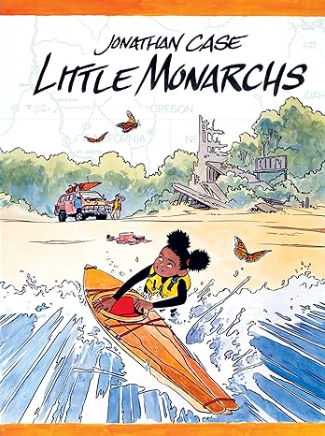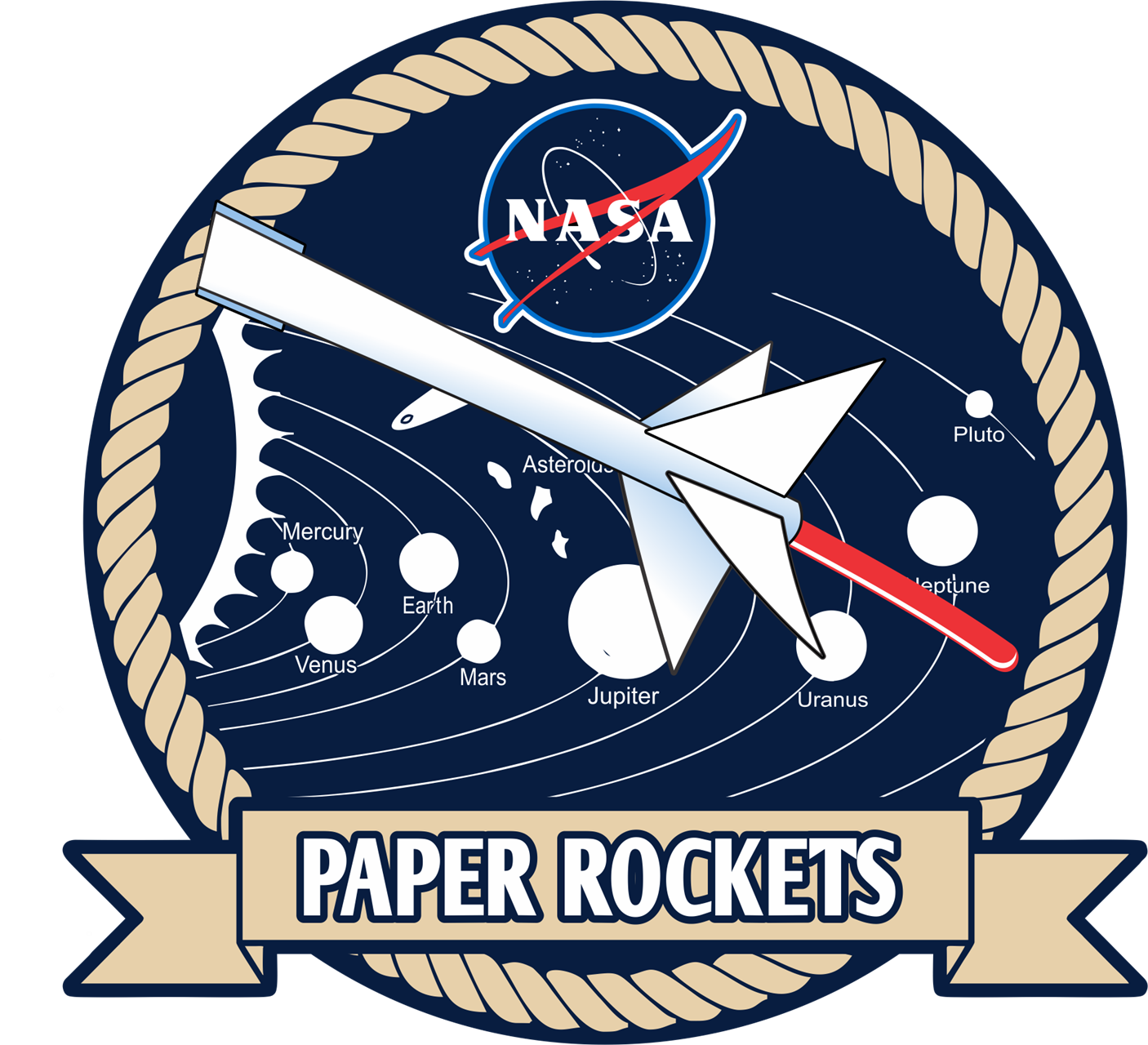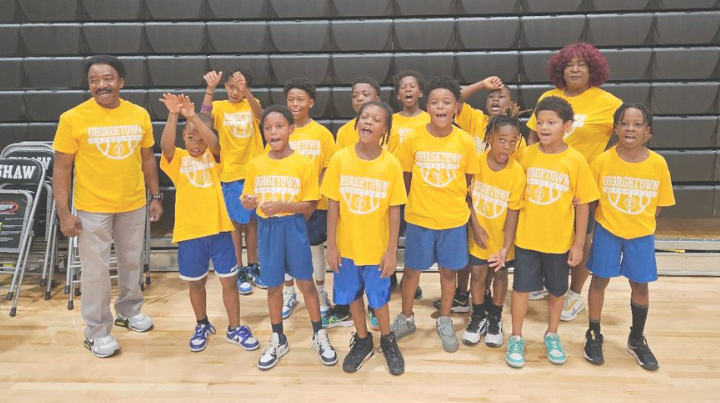
Picture Book Bowl
What is the Picture Book Bowl Team?
Kindergarten – 3rd-grade students
read and study a list of books to compete to see who knows the answers to the questions the quickest and most accurately

Picture Book Bowl book list for 24-25 school year

Arnaldo, M. (2023). Mr. S (M. Arnaldo, Illus.). Katherine Tegan Books.

Beckmeyer, D. (2023). I Am a Tornado (D. Beckmeyer, Illus.).
Atheneum Books.

Brew-Hammond, N. E. (2022). Blue: A History of the Color as Deep as the Sea and as Wide as the Sky (D. Minter, Illus.). Alfred A. Knopf.

Deedy, C. A. (2022). Wombat Said Come In (B. Lies, Illus.). Margaret Quinlin Books.

Faruqi, R. (2023). Milloo’s Mind: The Story of Maryam Faruqi, Trailblazer for Women's Education (H. Hadadi, Illus.). Harper Collins.

Lyall, C. (2022). A Spoonful of Frogs (V. Brosgol, Illus.). Greenwillow Books.

Moynihan, B. (2022). Not All Sheep Are Boring! (J. Rowan-Zoch, Illus.). G. P. Putnam’s Sons.

Syed, A. (2022). That's Not My Name! (A. Syed, Illus.). Viking Books.
Reading Bowl Team
What is the Reading Bowl Team?
4th and 5th grade students
Read and study a list of books to compete. Seeing who knows the answers to the questions the quickest and most accurately.
Helen Ruffin Reading Bowl book list for 24-25 school year

Brockenbough, M. (2023). To Catch a Thief. Scholastic.

Urchin Beach isn’t the sort of place where bad things happen. The little seaside town is too lucky for that. But then one day, a thief steals something – the town’s dragonfly staff, which is the source of all its good fortune and the most important part of the upcoming Dragonfly Day Festival…
Case, J. (2022). Little Monarchs. Margaret Ferguson Books.

A ten-year-old girl may be the only person who can save humanity from extinction in this exciting graphic novel adventure.
Kuyatt, M. E. (2023). Good Different. Scholastic.

Selah knows her rules for being normal.
She always, always sticks to them. This means keeping her feelings locked tightly inside, despite the way they build up inside her as each school day goes on, so that she has to run to the bathroom and hide in the stall until she can calm down. So that she has to tear off her normal-person mask the second she gets home from school, and listen to her favorite pop song on repeat, trying to recharge. Selah feels like a dragon stuck in a world of humans, but she knows how to hide it.
Until the day she explodes and hits a fellow student.

Ortega, C. A. (2023). Frizzy. First Second Books.

Marlene loves three things: books, her cool Tía Ruby and hanging out with her best friend Camila. But according to her mother, Paola, the only thing she needs to focus on is school and “growing up.” That means straightening her hair every weekend so she could have “presentable”, “good hair”.
Reynolds, J. (2023). It’s the End of the World and I’m in My Bathing Suit. Scholastic.

Twelve-year-old Eddie Gordon Holloway has concocted his most genius plan ever to avoid chores… especially the dreaded L-A-U-N-D-R-Y. If he can wear all the clothes he owns, he’ll only have to do the laundry once during his school break.

Souders, T. (2023) The Mystery of the Radcliffe Riddle. Sourcebooks.

When Grady and his dad learn that the town oddball, Eudora “Kooky” Klinch left something for them in her will, they can only imagine what it might be. When it turns out it’s an old scrap of 300-year-old tapestry, they are bitterly disappointed. But the cloth comes with a note saying, “This is no ordinary piece of needlework. It’s a treasure map. Riddles and Clues. To the victor go the riches.” Grady’s dad dismisses it, but Grady thinks this could be the chance of a lifetime. With the help of his friends Thad, Clemmie, and the town dog Ophelia, Grady is determined to crack the clues and find the treasure.

Tandon, N. (2022) The Way I Say It. Charlesbridge.

Rory still can’t say his r’s, but that’s just the beginning of his troubles. First Rory’s ex-best-friend Brent started hanging out with the mean lacrosse kids. But then, a terrible accident takes Brent out of school, and Rory struggles with how to feel.

Warga, J. (2022). A Rover’s Story. Balzer + Bray

Res was built to explore Mars. He was not built to have human emotions. But as he learns new things from the NASA scientists who assemble him, he begins to develop humanlike feelings. Maybe there’s a problem with his programming….
Tang, B. (2023). Parachute Kids. Graphix.

Feng-Li can’t wait to discover America with her family! But after an action-packed vacation, her parents deliver shocking news: They are returning to Taiwan and leaving Feng-Li and her older siblings in California on their own.
Suddenly, the three kids must fend for themselves in a strange new world–and get along. Starting a new school, learning a new language, and trying to make new friends while managing a household is hard enough, but Bro and Sis’s constant bickering makes everything worse. Thankfully, there are some hilarious moments to balance the stress and loneliness. But as tensions escalate–and all three kids get tangled in a web of bad choices–can Feng-Li keep her family together?

Thomas, A. (2023). Nic Blake and the Remarkables: The Manifestor Prophecy. Balzer + Bray.

It’s not easy being a Remarkable in the Unremarkable world. Some things are cool—like getting a pet hellhound for your twelfth birthday. Others, not so much—like not being trusted to learn magic because you might use it to take revenge on an annoying neighbor.
All Nic Blake wants is to be a powerful Manifestor like her dad. But before she has a chance to convince him to teach her the gift, a series of shocking revelations and terrifying events launch Nic and two friends on a hunt for a powerful magic tool she’s never heard of…to save her father from imprisonment for a crime she refuses to believe he committed.
Science Olympiad Team
What is the Science Olympiad Team?
3rd, 4th and 5th grade students
Compete in different events listed below!
Science Olympiad Events

Backyard Biologist
The Competition:
This event will be run as stations that the students rotate through. Stations may include but are not limited to drawings, scenarios, leaves, photographs, specimens, and songs.
Plants and Horticulture
Identify plant structure such as leaves, bark, fruit, flower, native range, and Concepts of gravitropism, phototropism, thigmotropism and
Basic soil properties (texture and capacity to hold water) and components (sand, clay and humus).
Wildlife
Basic characteristics and description of habitat
Eating habits and life cycles
Importance to the ecosystem and impact on humans or human activities
Identify calls, songs, tracks, pelts, skulls, and other identifying factors

Barge Building
The Competition:
This event students will construct a barge using aluminum foil that can support the largest number of objects without sinking
- Each team will be giving a 15cm X 15cm (6in X 6in) piece of aluminum foil.They will have 15 minutes to construct the barge, no other materials can be used other than the foil.
- The students will be informed of the type of cargo (pennies, washers, paper clips, marbles or other similar objects) they will predict how many of that object that their barge can hold.
- They will then have 5 minutes to load their barge, one object at a time, until the barge begins to sink. The object that causes the barge to sink will not count in the total.

Bridge Building

The Competition:
This event tests a student’s ability to build a lengthy, strong, stable, and
reproducible bridge from common materials.
1. Students will be given fifty popsicle sticks (4 ½ in x ¼ in size – NOT
JUMBO/Tongue Depressor size) and a meter of making tape. They are to
construct a bridge that spans the greatest possible distance and be able to
support a clay mass, or similar object, of varying weights on the bridge. Students will place the clay mass. or other object on the bridge. Then the students will continue to add weight to determine maximum amount to hold.
2. The bridge must support the clay mass, or object for 10 seconds. Students will be
able to move supports apart to increase the span of the bridge in order to declare a winner if a tie occurs.
3. No string or other materials may be used.
4. The bridge must be suspended on two similar supporting structures—like
two chairs or tables.
5. No popsicle sticks may touch the floor or other supporting structures.
6. Popsicle sticks may be broken and taped together
7. The clay mass will be placed in the middle of the bridge.

Crime Busters
The Competition:
The students will identify unknown powders, match fingerprints, and use chromatography to identify a note found a crime scene.
- The possible powders used will be; salt, granulated sugar, Plaster of Paris, salt, cornstarch, baking soda, limestone, and sand.
- Each team will receive 7 vials each containing one substance and two vials containing a mixture of two substances. They will also receive water, vinegar, iodine solution, a magnifying glass, and several plastic cups.
- Students will be given a set of fingerprints from several suspects and they will be tasked with matching them to the fingerprints found at the crime scene.
- Students will create a chromatogram from a pen and use this to help identify the criminals.
- Students will identify who committed the crime and why.

Data Crunchers
The Competition:
Teams will demonstrate their understanding of metric measurement by estimating and
measuring length (meter), mass (gram), fluid volume (liter), angles, and temperature
(Celsius). Teams should also be able to create and interpret data tables, bar graphs,
line graphs, pie charts, and pictographs and make basic calculations that include time,
money, fractions and percentage.
1. Students will work with their partner to answer questions related to estimation, measurements, all many types of data represented in graphs. Questions may include, but are not limited to questions involving the use of rulers, calculators,protractors, meter tapes, meter sticks, balances, beakers, graduated cylinders,thermometers, objects to measure and various types of graphs to be analyzed.
Questions may assess any or all of the following topics:
- Estimate or measure the angle degree, mass, volume, length, area, or
temperature of various objects in metric units to the precision requested. - Understand relative scale of metric units and which is appropriate for
measurement (mg, g, kg, mm, cm, m, km, mL, L, kL, o C, o K, cm2 , cm3 )
in different scenarios. - Collect data (e.g. number of water drops various coins can hold) and
represent that data in a correctly labeled graph or data table. - Plot data points, make and interpret data tables, draw and interpret
graphs, including what trends can be predicted from the data shown. - Make estimates of data between or beyond the data points given.
- Draw and identify lines and angles, and classify shapes by properties of
their lines and angles. - Calculate the amount of time between two events (No time zone
calculations). - Calculate fractions or percentages based on charts, tables or data.
- Solve word problems that involve the use of money

Deep Blue Sea

The Competition:
Students will be tested on their knowledge of oceanography.
Part 1: The team will view pictures and slides and answers questions relating to ocean flora (algae, kelp, etc.) and ocean fauna (mammals, mollusks, etc.)
Part 2: The team will respond to a series of questions relating to physical features (trenches, seamounts, etc.), phenomena (tidal waves, currents, etc.), geography (location and identification of the Georgia Barrier Islands, oceans, seas, major bays, etc.), and vocabulary relating to any of the topics listed above.
- Each team will be given a test packet to work together to complete. They can communicate through writing or whispering. At the end of the 20 minute testing period, all tests will be collected, even if teams are not finished.

Grab a Gram

The Competition:
Description: Teams will work together to pick up 50-75 grams of two different sets of materials. There will be two different rounds using different materials.
Team Members: 2 students
The Rules:
- Each student will have to pick up some of a material and place it in a clear cup. The amount will be specified at the event The materials could be one of the following: sand, paper clips, cereal, packing peanuts, beans, rice, etc.
Scoring:
The goal is to get as close to a set amount in grams as possible. Each team member will get a material and set amount any where between 50-75 grams. The team that gets closest to a combined total will win. If a team is given the amount of 50 grams and goes over 50, those points will be subtracted from 50 to find their score. For example, if a team scored 58 they would have 50 – 8 = 42. Any team scoring less than 50 per round will keep that exact score.
Practice Ideas:
Have students become familiar with what a gram, 25g, 50g, 100g, etc. feels like. Have them weigh certain materials to learn what their mass could be. We will use a brown paper lunch sack or a cup for measuring mass, so it is suggested to practice this way. Students will work together, so it is suggested to have them each become comfortable with what 50g feels like.

Mystery Architecture
The Competition:
-
Description: The teams will be given a set of undisclosed materials to build a freestanding tower as high as possible. The tower must be able to support a tennis ball at its top.
Team Members: 2 students
The Rules:
- Each team will be given a bag of the exact same materials. Materials could include: straight pins, paper cups, drinking straws, paper clips, tape, string, paper, etc.
- Teams will have 20 minutes to build their tower. The location of where the tennis ball will be placed must be higher than any other part of the tower.
- Teams are encouraged to bring their own tennis ball to test during their build time.
- Once they finish, the team will inform the judges and they will be given the official tennis ball to place at the top of the tower. The tower must remain standing long enough to have the height and base of the structure measured.
- It cannot be attached to anything other than the materials given.
- Students cannot be coached during this event.
Scoring:
- The judges will measure the height of the tower from the base to the top of the tennis ball. The width will be measured from the largest diameter of the base.
- All towers that can hold the tennis ball will be ranked higher than those that cannot. Tallest tower that can hold a tennis ball will be the winner.
Practice Ideas:
Give students different combinations of the materials listed above and practice creating towers. Create strategies for the different materials. Remember, the structure must hold a tennis ball, or another object, for at least 10 seconds. Have Fun!!!

No Bones About It

The Competition:
Description: Each team will identify pictures of bones. They will answer questions found on cards that pertain to the bones. Only the scientific name of the bone will be accepted.
Team Members: 2 students
The Rules:
- Stations will be set up in a room with pictures and possibly provided bones.
- They will move at the command of the supervisor, and they will only have 30 seconds at each station.
- Questions will relate to the identity of the bones and also could include questions on orientation, articulation, number of this type of bone in the human body, function, type of joint, and range of motion.
Scoring:
There will be 25 stations with 2 questions per station. Each question will be worth 2 points for a total of 100 points. The team with the highest point total will win.
Practice Ideas:
Have students be able to name and identify the bones in the human body.

Paper Rockets

The Competition:
Description: Each team will build and fly a paper rocket using the provided materials.
Team Members: 2 students
The Rules:
- The team will have 20 minutes to build a rocket and practice launching it. The winner will be determined after the official launching. The team closest to the target will win.
- The following materials will be provided: 2 large plastic soda straw, 2 sharpened pencils, 2 sheets of paper, one roll of tape, 1 pair of scissors, and 1 ruler.
- Scoring may be closest to target, aloft time , or length.
I would highly suggest having students practice making these paper rockets. Also, have them practice shooting at targets and for length. So often students arrive and have no idea how to create a rocket.
How to Build A Paper Rocket:

Disease Detective
The Competition:
-
Description:
Epidemiology uses science to study disease, injury, health, and disability in communities. This study involves: reasoning skills, such as those used by “disease detectives;” comparison of risks (the chances of becoming sick or injured); and surveys to help describe different groups of people (for example, kids in school classes and people in neighborhoods). The goal of the Disease Detectives event is to have students understand connections between things they may encounter in daily life and various health problems that affect communities, risks for disease/injury, and opportunities for prevention. The event will also help students to understand general categories of causes of diseases and injuries.
Number of Participants: 1 or 2
Approximate Time: 50 minutes
The Competition:
- The contestant or team (2) will complete 25 questions. These questions will consist of questions dealing with diseases, scenarios, vocabulary associated with diseases, interpreting data, etc.
- Each question, the participants will perform various activities, such as:
- identifying and writing the disease or injury problem related to the object
- describing how the object might be used or modified to prevent the disease or injury problem
- identifying and describing routes of transmission of disease (how is the virus spread)
- using simple calculations (e.g. addition, subtraction, multiplication, division) to make comparisons or risk for different groups. Students should also know how to find the mean, median and mode of numbers.
- interpreting a table or graph presenting data related to diseases.
- Understanding vocabulary associated with diseases. Some vocabulary used may be:
Epidemiology, epidemic, pandemic, environment, ecology, reservoir, vectors, fomites, viruses, bacteria, microorganisms, cells, contagious, antibiotic, host, contamination, incubation, hypothesis, pathogen, ailment, illness, hygiene, disease, terminal, and possibly more.
Sample Questions:
Questions might include examples of an improper cooking techniques as a risk factor for food-borne infectious disease, a bicycle helmet as a preventive measure for injury, fatty foods as a risk for heart disease, a tobacco product as a risk factor for lung cancer, or a bar of hand soap representing effective prevention of person-to-person spread of infectious disease. Students will also be asked to interpret data from a disease source.
Scoring:
Responses for each question will be graded. Time completing the 25 questions will be used for any tie-breakers.

No Bones About It

The Competition:
Description: Teams will prepare charts, identify various rocks and minerals and describe their characteristics.
Team Members: 2 students
The Rules:
- Students will be allowed 20 minutes to identify as many rocks and minerals as possible from a selected group. Possible rocks and minerals include, but not limited to:
.
2. Teams will be asked about the color, density, relative hardness, reaction to vinegar, shape, texture, etc. of rocks and minerals.
3. Teams should bring their completed rock chart with them to the competition. They can use the chart to help with the identification process and to aid with answers. Students can also bring up to 2 binders of information to help with aswering questions.
NEW – Each team may bring up to 2
commercially produced field guides and/or 2 –
3-ring binders with pages in any form from any
source. (This means 2 guides, or 2 binders or a
guide and a binder.)
• Rock and mineral specimens will be provided
during the event.
• Students may bring in two hand lenses.
Scoring:
Each rock or mineral identified and each correctly answered question will count as one point. The team with the highest total score will be the winner.
Suggested Ideas for practice:
Know the MOHs scale
Be able to identify common minerals
What are common minerals used for in the real world.
What are igenous, sedimentary, and metamorphic rocks.
Robotics Club
What is the Robotics Club ?
2nd and 3rd grade students
Learn to build, code, and create amazing lego robots with LEGO League Explore.
4th and 5th grade students
Students compete in building, designing, creating new solutions, and teamwork with LEGO League Challenge.
3rd, 4th and 5th grade students
Students create a robot that is integrated into a school-based standard competing against the other schools in the district.
Math Team
Pep Squad

Basketball Team






















